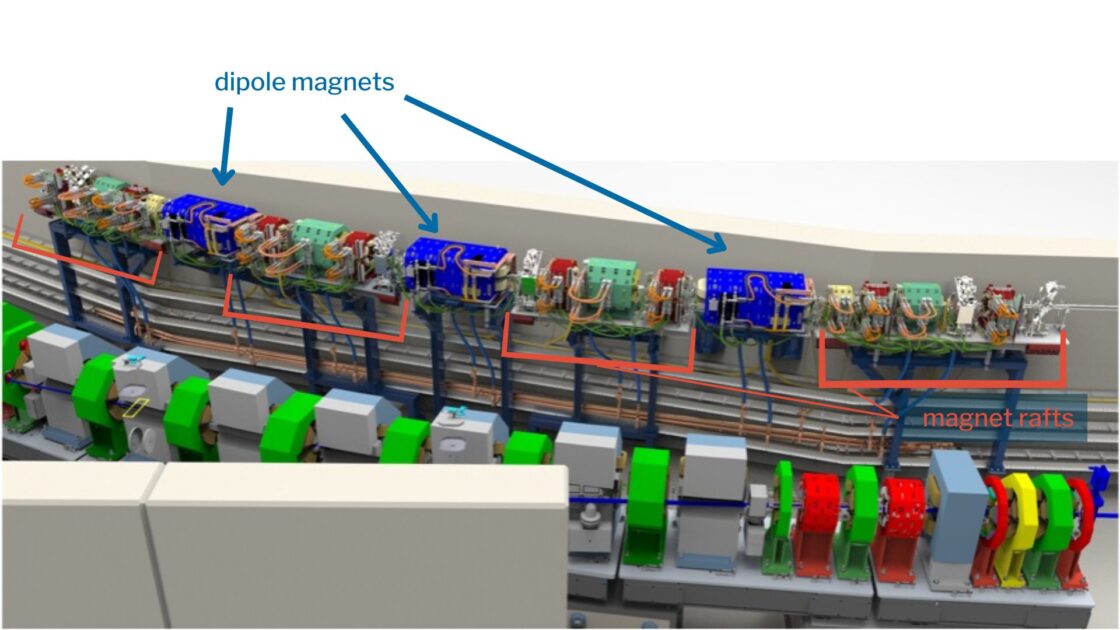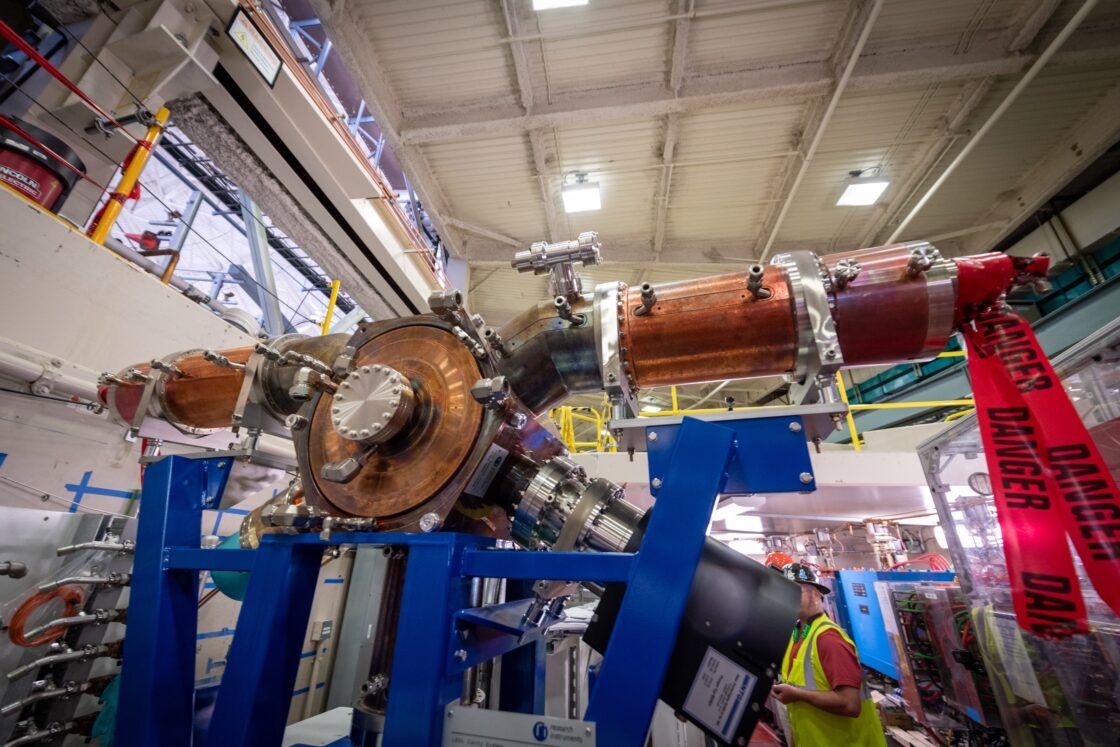by Ina Reichel
The ALS is back in user operation after more than two months of shutdown. By now, more than 80% of the accumulator ring (AR) has been installed, as well as both of its radio frequency (RF) cavities. Several other tasks were also completed.

The ALS-U team made a lot of progress on the installation of dipole magnets and magnet rafts for the ALS-U accumulator ring (AR). The AR will have a magnetic lattice similar to the current storage ring (triple-bend achromat), with 12 arcs, each containing three dipole magnets. To facilitate installation, quadrupole and sextupole magnets and other equipment are initially installed on a raft in the staging area, and then the team installs an entire raft into the accumulator ring. This is more efficient since all of the elements on a raft share the vacuum chamber and it is easier to assemble with space around the magnets instead of in the tunnel where the magnets are sitting next to the wall and shielding roofblock. The team exceeded their original shutdown plans by installing 22 dipoles (out of 36) and 23 rafts (out of 48), bringing the total number of dipoles and rafts installed in the ring to 28 and 35 respectively.
Similar to the current storage ring, the AR will also have two RF cavities. These will give the electrons back the energy they lose due to synchrotron radiation (although we don’t use it, the AR—just like the booster ring—will also produce synchrotron radiation). The two RF cavities were installed during this shutdown.

To accommodate all the additional cabling, many new wireways were installed in the storage ring tunnel. After this shutdown, all required wireways were installed and grounded. The team grounded a good portion of new equipment in the tunnel and relocated some cable trays containing wiring for the superbends, which were in the way of the AR.
A kicker magnet for ALS-U had been installed in the storage ring during the winter shutdown for extended testing. During the summer shutdown, the kicker was replaced with an RF bellow prototype. RF bellows are used as connectors between vacuum chamber sections (similar to flexbands that are currently used in the storage ring). To be able to test the RF bellow, the storage ring needs to use a different magnetic lattice that has a large beam size at the injection and a small one at the location of the RF bellow. With the bellow in the ring, we can’t use the lattice required for user operation, but during the shutdown, the team was able to collect enough data to compare to simulations. After several days of testing, it was concluded that the impedance of the kicker is as predicted.
After testing the RF bellows was removed, and the team finished commissioning the storage ring.
During the most recent winter shutdown, the project team completed the mechanical installation of the new booster bend power supply. The next step was the electrical installation, which was finished during this shutdown. The team began commissioning during start-up but unfortunately discovered a problem that will require some repairs. The booster bend magnets will run on the old power supply for now.
The coldheads of the three superconducting superbend magnets were serviced. This has to be done every 18 months as part of their regular maintenance. It requires warming up the magnets to room temperature and afterward cooling them down to liquid helium temperature again, a process that requires a couple of weeks. During this time we also raised the cable trays that go along the ceiling of the storage ring in order to make room for the AR. We had to pull back all the electrical cables and cryogenic piping, remove the old ladder tray, install a new cable tray a few inches higher, and then pull all the cables and piping back to the magnets.
In the storage ring pit, several racks for devices in Sectors 5 and 12 were moved to different locations and consolidated to make room for ALS-U racks. This involved hundreds of feet of cable tray installation and many cable pulls along that length.
Some power supplies for magnets in the transfer lines from the linac to the booster ring and from the booster ring to the storage ring were replaced.
The cooling for the RF system in the storage ring was upgraded.
Now that more than 80% of the AR has been completed, along with many other ALS-U projects, this shutdown positions us well to run another user operations cycle. Our team will also be ready for the next set of tasks in the upcoming winter shutdown.